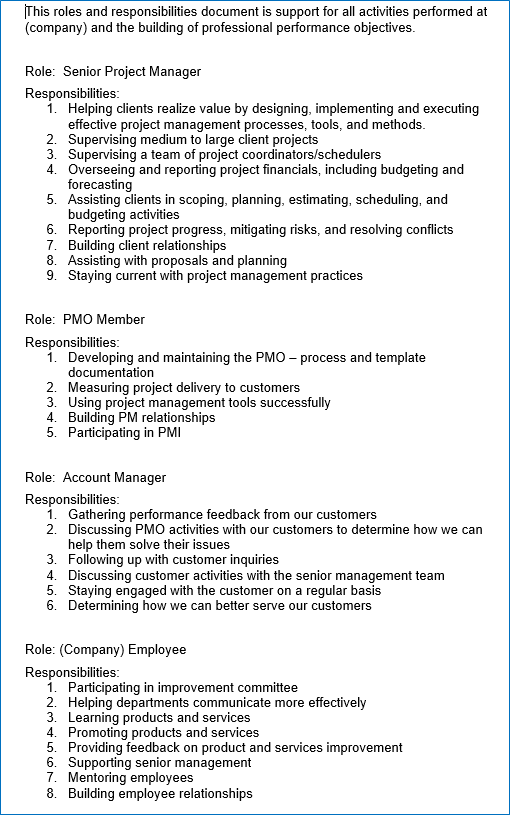
One common question that can be asked to any company, department, or individual is: “What do you do and how does it benefit me?” After you recover from the shock and crassness of the question, you realize that that is the reason people start businesses, create departments, and hire individuals … to create value.
To successfully provide the value that people are anticipating, you need to first understand your roles, responsibilities, and other’s expectations of you. This is more than just a job description; this is applying your skills to a need (responsibility) that adds value to your organization … or even to your personal life.
 What are the different hats I wear (roles) and how do I contribute (responsibilities)?
What are the different hats I wear (roles) and how do I contribute (responsibilities)?
The best practices for creating Roles and Responsibilities are:
- Determine if this is professional or personal – I would keep them separated since you have different audiences to consider
- List the roles you have – consider all the stakeholders.
- Professionally – Individual roles, team roles, and company roles are most common
- Personally – Family roles, household roles, and community roles are most common
- Under each of the roles – list your responsibilities; what you do or would like to do in support of that role. These bullet points should start with a verb; such as helping, supervising, overseeing, building, participating, etc. Think of who interacts with that role and what they may expect. As you are creating this responsibility list, you may be amazed at what ends up on the list!
- Review the Roles and Responsibilities with the stakeholders that are impacted. This is where the rubber meets the road! Do they agree with what you have written? Do they have other expectations? Are they amazed at all that you do?
- Professionally – manager, other departments you interface with, and peers are most common
- Personally – spouse/partner, contacts at organizations, and family are most common
Remember creating Roles and Responsibilities is for clarity. This activity is going to help you be successful and add value, so any and all feedback is appreciated!
A professional example for a Project Manager Role may look like this:

The Roles and Responsibilities is a living document. It will evolve over time; especially as roles and relationships change.
Now that you have clarity, you realize what you need to do and how you should work with others. This document helps departments and individuals agree on how to work together and who has responsibility for what. If there are Rules of Engagement issues, then the agreed upon solution should be reflected in the document.
So yes, it would be a great idea to have everyone in your organization create their own Roles and Responsibilities.
The Roles and Responsibilities document can now be a basis for:
- Rules of Engagement / Interactions
- Individual goals
- Individual training
- Personal performance measures
Using the Roles and Responsibilities example above, the Senior Project Manager goal may be to get their PMP Certification; since it will support the responsibilities in the Senior Project Manager and PMO Member roles. To get this certification, training may need to be scheduled. Once achieved, personal performance is achieved and should pay off in the annual review or in future opportunities. Also, the chances of successfully achieving the PMP Certification have increased dramatically, because there is now a personal connection to the goal. It will more likely become a priority at work and at home, and achieved.
Roles and Responsibilities not only provide focus, but they also bring efficiency. Being more effective and efficient, will always bring value to you and your organization/family, so let’s get started!

For more information on how we can help you and your project management team, send us an email
If you are looking to kick start your project management journey, sign up for our Microsoft Training Classes. We hope you find this blog post helpful. For more tips and tricks on Project Management, follow us on LinkedIn and Instagram

